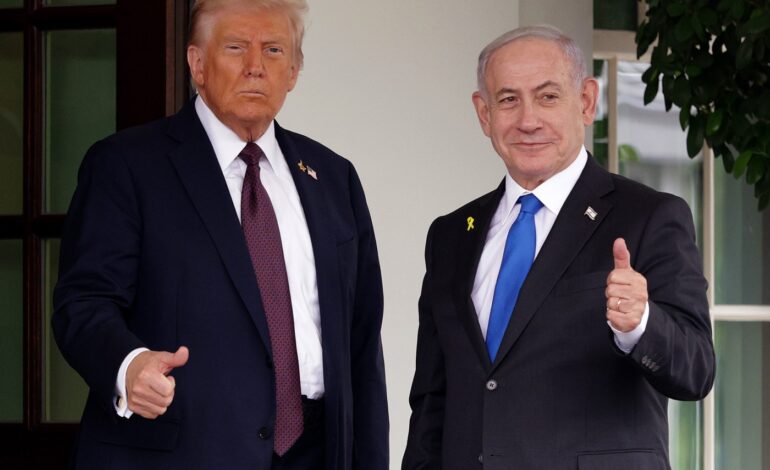Trump Proposes Peace Plan to End Gaza Conflict and Dismantle Hamas

On the two-year anniversary of the October 7 Hamas attack, which resulted in significant loss of life and triggered extensive conflict in the Gaza Strip, a new peace initiative has been proposed. Former U.S. President Donald Trump unveiled a comprehensive 20-point plan aimed at ending the war and dismantling Hamas as a governing body in Gaza.
During a press conference with Israeli Prime Minister Bibi Netanyahu, Trump outlined the framework for a potential resolution to the ongoing violence. The plan has garnered acceptance from key international players, including several European allies and major Muslim countries such as Indonesia and Pakistan. Although Hamas has expressed conditional agreement, this is viewed as a significant step toward peace.
Key Components of the Plan
The proposed plan emphasizes the immediate release of all Israeli hostages held by Hamas, a crucial element that has been a point of contention for the past two years. In conjunction with this release, Hamas is being urged to allow the return of the remains of deceased hostages. The humanitarian aspect of the plan is critical, as it aims to transition Gaza away from Hamas’s militant rule.
Once the hostages are released, the plan envisions a restructuring of governance in Gaza. A “technocratic, apolitical Palestinian committee,” composed of qualified individuals and international experts, would oversee the region’s administration. This committee would operate under the supervision of a new international body, tentatively named the “Board of Peace,” which would be chaired by Trump and include former UK Prime Minister Tony Blair.
The proposal also calls for a temporary International Stabilization Force (ISF) to be deployed in Gaza. This force would assist in training and supporting vetted Palestinian police, collaborating with neighboring countries like Jordan and Egypt that have experience in maintaining security.
A Vision for the Future
Economic development and rebuilding efforts are integral to the plan, which seeks to eliminate the influence of Hamas in the region. The strategy explicitly states that Hamas and affiliated factions would relinquish any governing role in Gaza, along with a commitment to dismantle military infrastructure, including tunnels and weapon production facilities.
Individuals affiliated with Hamas who agree to peaceful coexistence and disarmament would be granted amnesty. Those wishing to leave Gaza would be provided safe passage to other countries. The proposal aims to ensure that the remnants of Hamas’s influence are eradicated, allowing a new governance structure to emerge.
According to the plan, the legacy of Hamas will be defined by the extensive suffering and destruction it has caused for both Israelis and Palestinians. The proposed peace initiative presents an opportunity to create a stable and prosperous future for Gaza, free from the shadow of terrorism.
As discussions progress, the international community’s response will be crucial in determining the viability of this plan. The hope is that with unified support, a lasting peace can be achieved in a region long affected by conflict.






